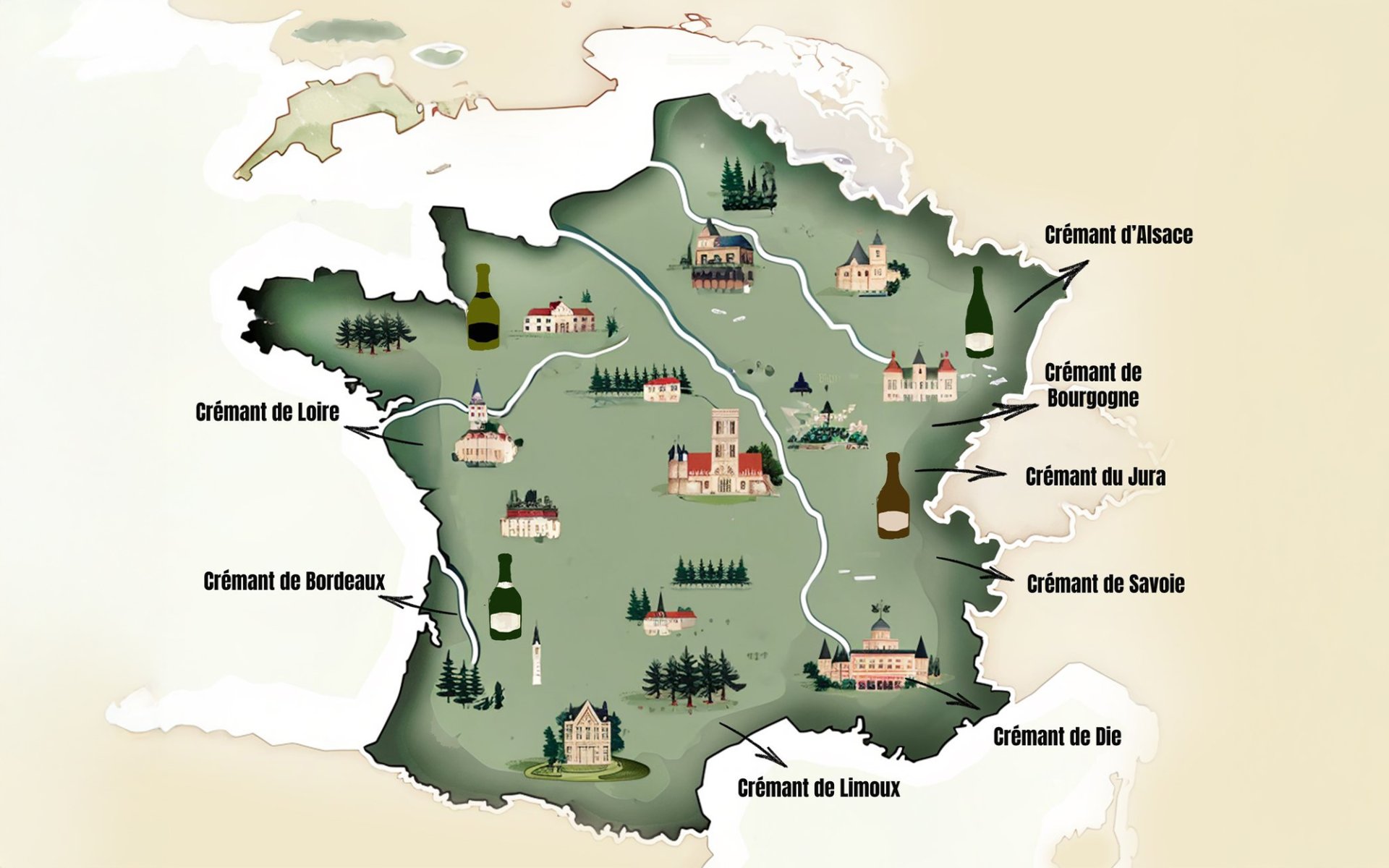Crémant

Crémant is a sparkling wine produced in France, similar to Champagne, but made outside the Champagne region. Therefore, it cannot be called Champagne. However, Crémant is produced using the same traditional method as Champagne, known as Méthode Champenoise, or secondary fermentation in the bottle, which is key to its fine, delicate bubbles.
The Origin of the Name Crémant and Its Separation from Champagne
The word Crémant comes from the French word meaning creamy. Historically, this term was used to describe Champagne that had less effervescence than usual. However, in 1975, new laws were enacted to clearly distinguish Champagne from Crémant.
These regulations stipulated that Champagne must be produced exclusively within the Champagne region according to strict rules to ensure consistent quality. Consequently, the term Crémant, referring to sparkling wines with less effervescence than typical Champagne, was then adopted for sparkling wines produced outside the Champagne region.
Production Regions and Strict Regulations
Crémant can be produced in eight designated regions of France, excluding Champagne: Alsace, Bordeaux, Burgundy, Die, Jura, Limoux, Loire, and Savoie. The production rules emphasize:
- Manual grape harvesting: To maintain the highest quality of the grapes.
- Gentle pressing of grapes: To extract pure, high-quality grape juice.
- Fermentation in oak barrels.
- Minimum of 12 months aging in the bottle: To develop complex flavors and fine bubbles.
- Crémant can be made using a wider variety of grapes than Champagne, including Pinot Blanc, Chardonnay, Pinot Gris, and Pinot Noir. Champagne, on the other hand, must primarily use Chardonnay, Pinot Noir, and Pinot Meunier grapes.
Diverse Styles of Crémant from Various Regions
Currently, several regions in France are renowned for their Crémant production. Each area utilizes its native grape varieties, resulting in distinct Crémant styles, such as:
- Crémant d'Alsace: This is one of the most popular Crémants, produced in the Alsace region. It is characterized by its freshness and fruity aromas, such as apricot and almond. It is often made from Pinot Blanc, Riesling, and Pinot Gris grape varieties.
- In 1976, Crémant d'Alsace was granted AOC (Appellation d'Origine Contrôlée) status, a protected designation of origin, which mandates its production exclusively within the Alsace region. Today, Alsace is considered the largest Crémant producing region in France, accounting for approximately 50% of all Crémant production, with about 32 million bottles produced annually.
Crémant de Bourgogne (Crémant de Burgundy): Produced in Burgundy, this Crémant is also very popular. In this region, it is often made from Chardonnay and Pinot Noir grapes, the same varieties used for still wines. It is highly regarded for its fresh, well-balanced taste and fine bubbles.
Distinction from Champagne and Growing Popularity
While Crémant cannot be called Champagne, this type of sparkling wine undergoes quality control similar to Champagne. The key differences lie in the production region, grape varieties, price, and prestige. Crémant is generally more affordable than Champagne and offers a wider range of flavors.
Today, Crémant is gaining popularity worldwide, known for its quality and accessible price point. Furthermore, many producers are adopting sustainable and organic viticulture practices, making Crémant even more appealing to contemporary consumers.


